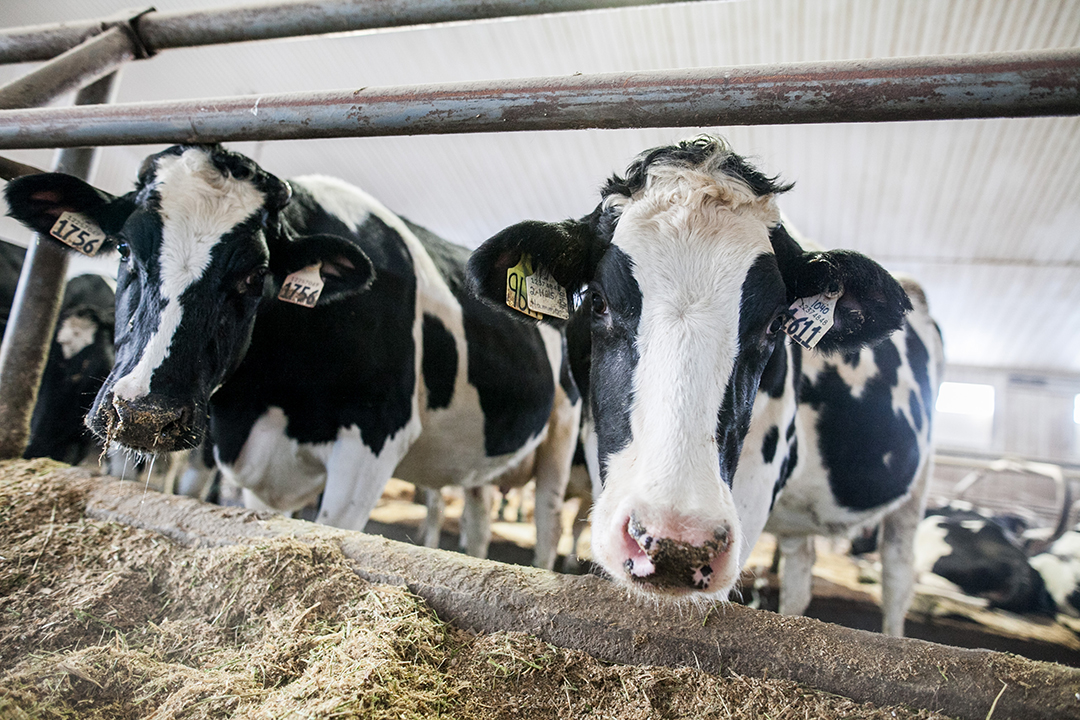
Bacteria-killing molecules may be key to new mastitis therapy
A Western College of Veterinary Medicine (WCVM) researcher and his team are taking a molecular approach to finding a new way of treating a common health issue in the dairy industry.
By Aimen KhanDr. Tony Ruzzini is looking for molecules that can kill Staphylococcus aureus, a causative agent of mastitis in dairy cattle. Mastitis is an inflammatory disease, mostly caused by bacteria, that affects the mammary glands and can cause permanent damage to a cow’s udder.
During mastitis, the bacterial infection leads to a swollen, reddish teat that’s painful for the cow. Often only one of a cow’s four teats (quarters) will become infected — a circumstance that leads to many questions related to how a specific site becomes infected.
“Mastitis affects animal welfare and can limit the economic potential of dairy farmers. Clinical illness causes discomfort to the animal along with losses in milk production,” says Ruzzini, an assistant professor in the WCVM’s Department of Veterinary Microbiology.
When cows are affected by mastitis, their low-quality milk must be discarded to avoid food safety and public health issues. Mastitic cows also produce less milk. Besides the production losses, dairy producers must spend time and money treating cows suffering from mastitis.
“Larger dairies are more prone to disease and any sort of infection can be dangerous. We are looking for antibiotics and molecules that have the ability to kill these infectious agents,” says Ruzzini.
A major challenge in many antibiotic discovery research programs is rediscovery of known antibiotics. To avoid this problem, researchers are turning to previously understudied bacterial communities and environmental niches that are somehow related to a disease of interest.
One approach, for example, is to study the bacterial niche that becomes infected by a pathogen to understand how bacteria compete for nutrients and space. This knowledge, along with the small molecules that are produced by interacting bacteria, may then be used to inhibit the activity of harmful bacterial pathogen. Ruzzini and his team are adopting this strategy to seek out molecules that can kill S. aureus.
“This study is focused on bacterial communities living in and on the cows. We want to know if and how non-pathogenic bacteria can prevent infection and whether some bacterial community members are chemically compatible or incompatible with other communities and pathogens,” explains Ruzzini.
“This should teach us a lot about the teat microbiome of dairy cattle.”
Some bacteria grow in complex environments called biofilms — one of the mechanisms that bacteria use to protect themselves from the antibiotic drugs. Among the current treatments available to dairy producers are dicloxacillin and cephalexin, two antibiotics that must be used in a treatment course that can become very costly for producers. If Ruzzini and his team can develop a cheaper and effective treatment for mastitis, their findings will have considerable benefits for the dairy industry.
As Ruzzini points out, staphylococcal infections are not limited to dairy cattle – they are common pathogens of mammals, including humans. For example, new mothers can also get mastitis but hospital- and community-acquired antimicrobial-resistant Staphylococcus aureus infections are probably the greatest threat to public health.
By focusing on antibiotic discovery against a common pathogen, any molecular discovery linked to the mastitis research project could also prove to be useful in treating human patients.
Saskatchewan’s Agriculture Development Fund has provided funding in support of Ruzzini’s mastitis research work.
Aimen Khan is a second-year chemistry student in the University of Saskatchewan’s College of Arts and Science. Her story is part of a series of articles written by WCVM summer research students.
